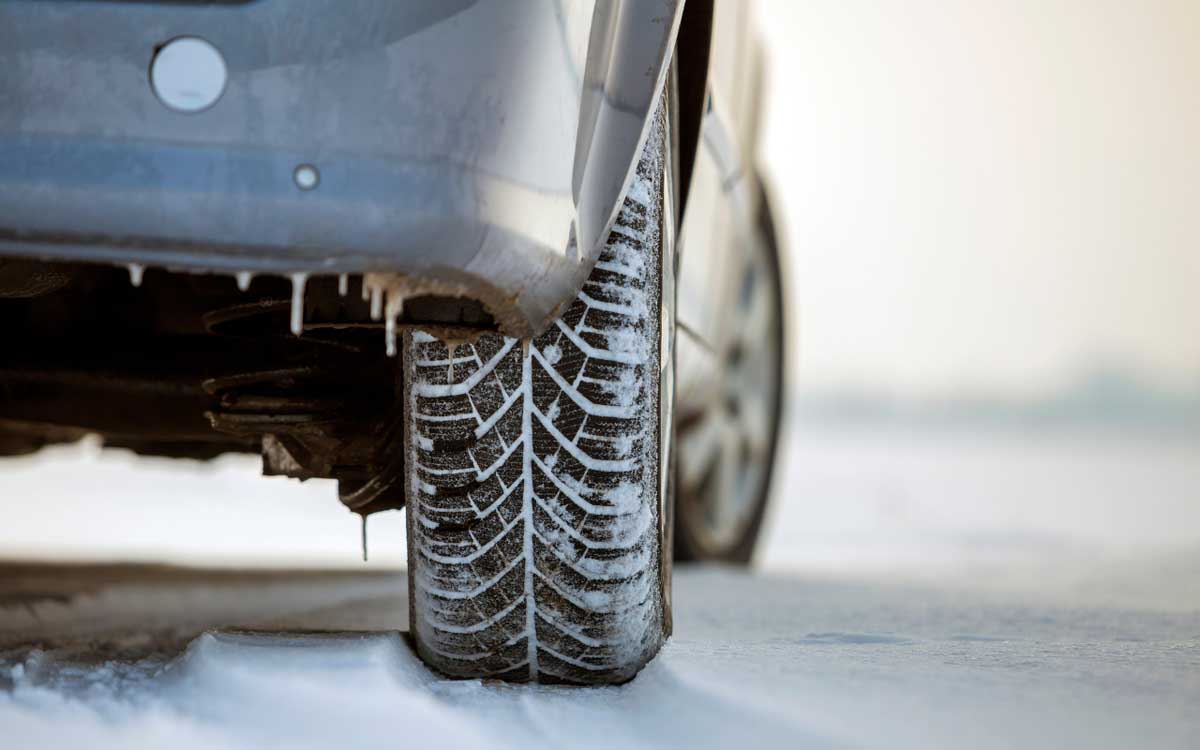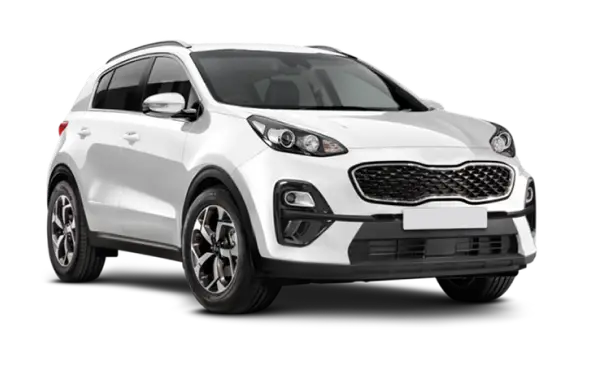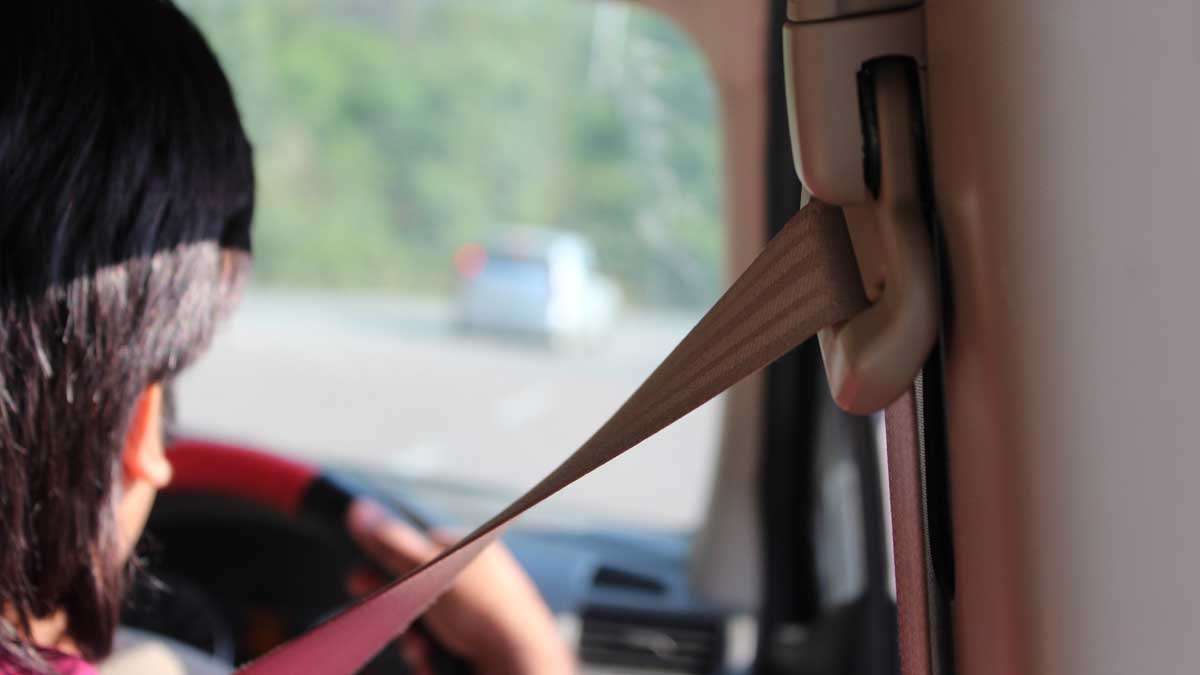To drive safely on ice, you should slow down, accelerate and brake gently, and maintain a safe following distance. Use low gears or “Snow Mode” if your vehicle has it, and avoid sudden movements to prevent skidding.
In this guide, we’ll cover how to drive on ice in more detail, including essential tips on driving on black ice, handling an automatic car, and avoiding slipping.
Tips for Driving on Ice
- Use Headlights: Keep your headlights on, even during the day, for better visibility.
- Clear Snow and Ice from Your Vehicle: Ensure all windows, mirrors, and lights are clear of snow and ice.
- Avoid Overtaking: Refrain from overtaking on hills, bends, or intersections.
- Brake Gently and Early: Start braking earlier than usual and do so gently to prevent skidding.
- Carry an Emergency Kit: Have a kit with a torch, blanket, shovel, ice scraper, and first aid supplies.

Preparing Your Vehicle for Ice Driving
Winterising your vehicle is crucial for safe driving on ice. Regularly check your tyre pressure, as cold temperatures can cause it to drop. Ensure your car battery is in good condition, as cold weather can affect its performance. Use winter windshield washer fluid to prevent it from freezing and to keep your windshield clear. It’s also wise to have your vehicle serviced to check for any issues that could worsen in icy conditions, such as worn brakes or low antifreeze levels. Proper winter vehicle maintenance can significantly enhance your safety on icy roads.
Different Types of Road Ice
| Type of Ice | Description | Formation | Danger |
|---|---|---|---|
| Black Ice | A thin, transparent layer of ice that looks like a wet patch. | Occurs when temperatures drop rapidly, freezing moisture on the road surface. | Nearly invisible and difficult to detect, often causing sudden skidding. |
| Glaze Ice | A thick, smooth layer of clear ice. | Created when freezing rain coats the road surface and solidifies. | Extremely slippery, making it challenging for vehicles to gain traction. |
| Hoarfrost Ice | Fine ice crystals that look like frost. | Forms overnight or early morning due to moisture freezing directly onto the road. | Can create a thin, slick layer that reduces traction significantly. |
| Rime Ice | Rough, white ice that looks like frost. | Develops when supercooled fog or mist freezes onto surfaces. | Less slippery than black ice but still poses a hazard on the road. |
| Packed Snow/Ice | Compacted snow that has turned into ice due to repeated traffic. | Snow that is compressed and hardened by vehicles over time. | Offers better traction than other ice types but can still be slippery, especially if refrozen. |
| Bridge Ice | Ice that forms specifically on bridges and overpasses. | Bridges cool faster than surrounding roads due to air circulation below them. | Often unexpected, as roads before and after a bridge may be clear. |
| Slush | A mixture of partially melted snow and ice, often appearing wet. | Occurs when temperatures rise above freezing, causing snow and ice to melt. | Can refreeze into ice or cause hydroplaning due to its high moisture content. |
The Importance of Adjusting Speed Limits on Ice
Speed limits are designed for optimal driving conditions, not icy roads. During winter, it’s crucial to adjust your speed to match the road conditions, even if that means driving well below the posted limit. A good rule of thumb is to reduce your speed by half when the roads are icy. Judge a safe driving speed by considering the visibility, road surface, and traffic conditions. Remember, it’s better to drive slowly and arrive safely than to rush and risk an accident. Adjusting your speed in winter can prevent accidents and ensure a safe journey.
How Does Ice on the Road Affect Driving Performance?
Ice has a significant impact on driving performance because it reduces the friction between the tyres and the road. This makes it harder for your vehicle to accelerate, brake, or steer effectively. Here are some key ways ice affects driving:
- Reduced Traction: Ice creates a slippery surface that makes it difficult for tyres to grip the road, leading to slipping or skidding.
- Longer Stopping Distances: The reduced friction means braking takes longer, increasing stopping distances.
- Decreased Steering Control: Turning on ice is challenging due to the lack of grip, increasing the likelihood of understeering or oversteering.
- Potential for Black Ice: Black ice, a transparent layer of ice that forms on shaded roads, is particularly dangerous as it’s difficult to see.

How to Drive on Black Ice
Black ice is one of the most dangerous forms of ice on the road because it’s nearly invisible. Here’s how to handle black ice:
- Stay Calm: If you start sliding on black ice, remain calm and avoid panic braking.
- Let Off the Accelerator: Gently ease off the accelerator without sudden movements.
- Steer in the Direction of the Slide: If your vehicle starts to skid, steer in the same direction as the rear of the car is sliding to regain control.
- Avoid Sudden Movements: Don’t slam the brakes or make sudden steering adjustments, as this could worsen the skid.
- Slow Down: Reduce your speed in areas prone to black ice, such as bridges, shaded stretches, and intersections.
How to Drive on Ice in an Automatic
Driving an automatic car on ice requires a delicate touch. To drive safely, switch to a lower gear to increase traction and control, and activate your car’s “Snow Mode” if it has one. Apply gentle acceleration to avoid wheel spin, and brake gradually by applying brakes slowly and steadily to prevent sudden stops.
Maintain a safe distance from the vehicle ahead to allow more time for braking. Above all, avoid overconfidence by not relying solely on your vehicle’s automatic features; instead, adjust your driving style to match the icy conditions.
How to Avoid Slipping on Ice While Driving
- Slow Down: Reduce your speed to increase tyre contact and control.
- Maintain a Safe Following Distance: Keep a distance of at least 6-8 seconds from the car in front.
- Use Snow Tyres or Chains: Equip your car with snow tyres or chains for better traction.
- Avoid Sudden Movements: Accelerate, brake, and steer gradually to maintain control.
- Stay in Higher Gears: Drive in a higher gear to reduce wheel spin.

Defensive Driving Techniques for Winter
Defensive driving is even more critical in icey and snowy road conditions. Anticipate the actions of other drivers and be prepared for sudden stops or skids. Increase your following distance to give yourself more time to react. Be extra cautious at intersections, where ice tends to accumulate and other drivers might not stop in time. Always signal your intentions early and avoid sudden movements. Keeping both hands on the wheel and your focus on the road will help you react quickly to any hazards. Adopting defensive driving techniques is key to staying safe on icy roads.
Conclusion
Driving on ice requires extra caution and preparation. By understanding how ice affects driving and adopting safe driving techniques, you can reduce the risk of accidents and arrive safely at your destination. Stay calm, drive slowly, and avoid sudden movements. Remember that it’s always better to arrive late than not arrive at all.





